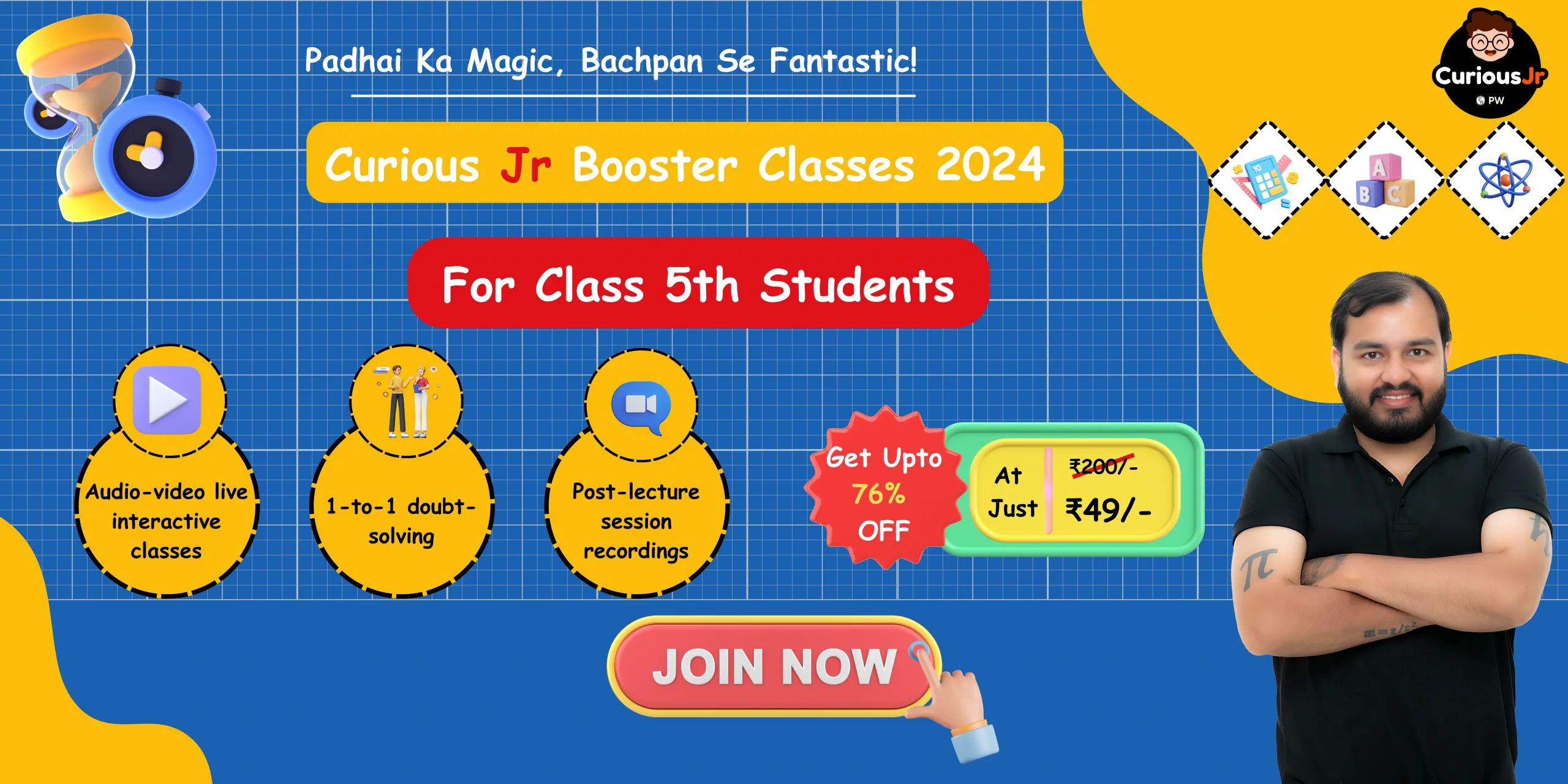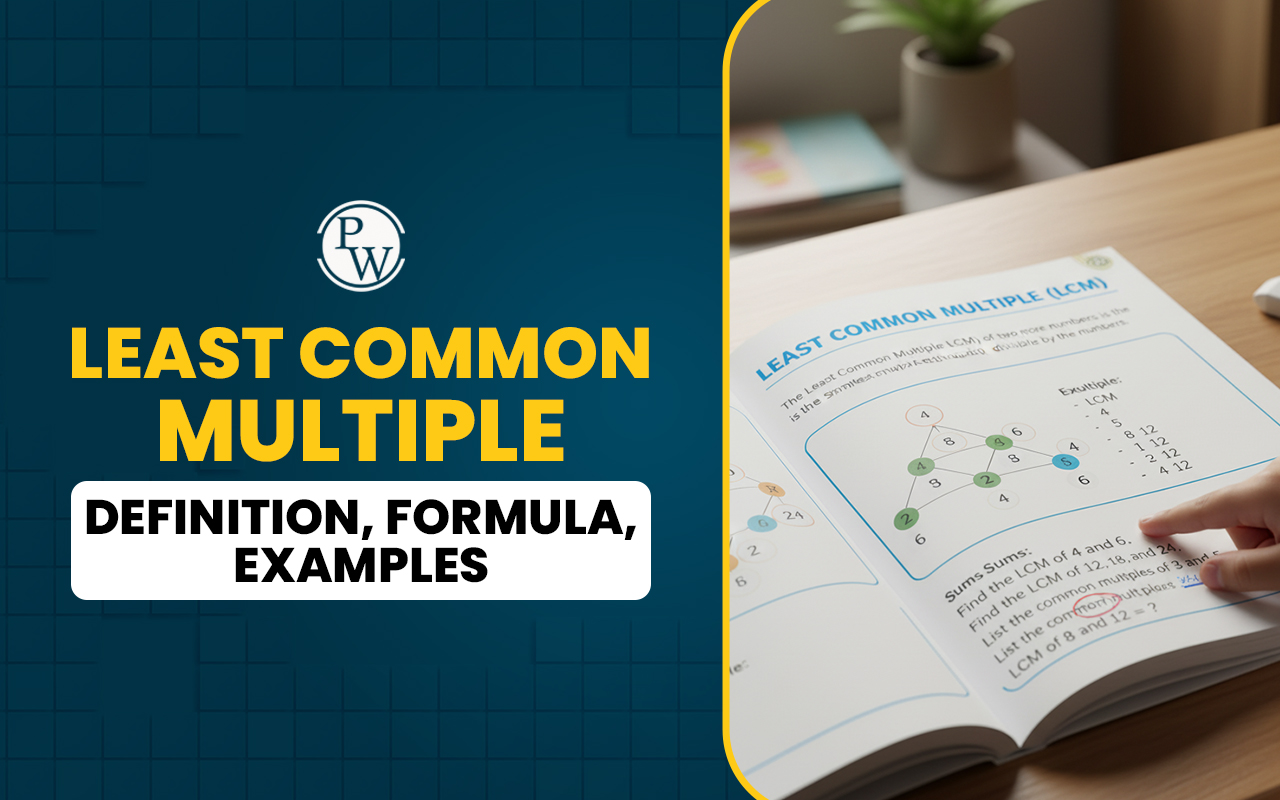
NCERT Solutions for Class 5 Maths Chapter 12: The Smart Charts from NCERT Solutions for Class 5 Maths Chapter 12 are a great resource for students getting ready for their final exams. The PW subject-matter experts develop the NCERT Solutions under the Class 5 CBSE syllabus.
Academic and non-academic, mathematics has always been at the forefront of practically every field. Because of this, it is crucial to understand how some concepts are used in real life as well. Notes, textbooks, solutions, and other study tools are available here for Class 5 students.NCERT Solutions for Class 5 Maths
NCERT Solutions for Class 5 Maths Chapter 12 Overview
Take a thrilling investigation in NCERT Solutions for Class 5 Maths Chapter 12. This chapter introduces students to the realm of charts while making learning about data representation entertaining and approachable. Examine the principles of making and analyzing charts to establish the foundation for proficient data analysis. The Smart Chart revision notes provided by our knowledgeable tutors are quite helpful in Class 5, as students come across a wide range of mathematical ideas. They provide thorough content that is easily understood.NCERT Solutions for Class 5 Maths Chapter 12 PDF
Students will improve their ability to reason clearly and solve problems appropriately by studying Smart Charts Class 5. It is designed to provide a solid basis for building tables, utilizing data, and obtaining information. As a result, the pupils will be exposed to statistics at an early age. Here we have provided NCERT Solutions for Class 5-chapter 12 pdf.NCERT Solutions for Class 5 Maths Chapter 12 PDF
NCERT Solutions for Class 5 Maths Chapter 12
1. Look at the tally marks and write the number for each animal in the table. How many children did Yamini talk to?
Solution:
Yamini talked to 131 children.2. Which is the most favorite pet animal on this table?
Solution:
The dog is the favorite pet animal on this table.3. Which pet will you like to have? What will you name it? Which other animals can be kept at home? Discuss.
Solution:
I'd love to own a dog. Let me call it Brownie. Other creatures that can be housed in homes include parrots, cats, and rabbits.Making Tally Marks on the Road:
Sumita stood on the road for half an hour and counted the number of vehicles passing by. She made a tally mark for each vehicle. This helped her in counting the total number of vehicles quickly in each group.

1. Write the number of each vehicle in the table.
Solution:

2. How many vehicles in all did Sumita see on the road in half an hour?
Solution:
Sumita saw 103 vehicles in half an hour.3. Auto rickshaws are thrice the number of trucks – true/false?
Solution:
False.4. Make tally marks for 7 more buses and 2 more trucks.
Solution:
Tally marks for 7 more buses:
1) Look and find out:
Children who help in making or serving food are
a) One-third of the total children
b) Half of the total children
c) One-fourth of the total children

Solution:
c) One-fourth of the total children
2) Practice time:
After school, ask 10 of your friends about what they like to do most after school.
Solution:
Hot and Cold:
Have you seen the weather report on TV or in a newspaper? These are two bar charts. These show the highest temperature (in degrees Celsius) in four cities on two different days. The cities are Delhi, Shimla, Bangalore and Jaisalmer.

Find out the following from the bar chart:
1. Which city is hottest on 1 June?
Solution:
Jaisalmer is hottest on 1 June.2. Which city is coldest on 1 December?
Solution:
Shimla is coldest on 1 December.3. Which city shows little change in temperature on the two days – 1 June and 1 December?
Solution:
Bangalore shows little change in temperature on the two days. Lowest change = 28 – 24 = 4 o C.Rabbits in Australia:
Earlier, there were no rabbits in Australia. Rabbits were brought to Australia around the year 1780. At that time, there were no animals in Australia which ate rabbits. So the rabbits began to multiply at a very fast rate. Imagine what they did to the crops!
The table shows how rabbits grew every year.

1. After each year, the number of rabbits was
a) A little less than double the number of rabbits in the last year.
b) Double the number in the last year.
c) 8 more than the number in the last year.
d) More than double the number of rabbits in the last year.
Solution:
a) A little less than double the number of rabbits in the last year.2. At the end of year 6, the number of rabbits was close to
a) 400
b) 600
c) 800
Solution:
a) 4003. After which year did the number of rabbits cross 1000?
Solution:
After the year 1788, the number of rabbits crosses 1000.Family Tree:
Madhav went to a wedding along with his parents. He met many relatives there. But he didn’t know everyone. He met his mother’s grandfather but found that her grandmother was not alive. He also found that her mother (grandmother’s mother) is still alive and is more than a hundred years old.
Madhav got confused. He couldn’t imagine his mother’s grandmother’s mother! So, Madhav’s mother made a family tree for him, as shown below:

Madhav’s mother helped him understand her family with the help of this drawing. You can also find out about your older generations using such a family tree.
Answer the following questions:
1. How many grandparents in all does Shobna have?
Solution:
Shobna has four grandparents.2. How many great, great grandparents in all does Madhav have?
Solution:
Madhav has eight great, great grandparents in all.3. How many elders will be in the VII generation of his family?
Solution:
32 elders will be in the VII generation of his family. VI generation: 8 × 2 = 16 VII generation: 16 × 2 = 324. If he takes his family tree forward, in which generation will he find 128 elders?
Solution:
Number of members in VII generation of Madhav’s family = 32 Number of members in VIII generation of Madhav’s family = 32 × 2 = 64 Number of members in IX generation of Madhav’s family = 64 × 2 = 128 Thus, in the IX generation, the number of elders in Madhav’s family will be 128.Growth Chart of a Plant:
Amit sowed a few seeds of moong dal in the ground. The height of the plant grew to 1.4 cm in the first four days. After that, it started growing faster.
Amit measured the height of the plant after every four days and put a dot on the chart. For example, if you look at the dot marked on the fourth day, you can see on the left side scale that it is 1.4 cm high.
Now look at the height of each dot in cm and check from the table if he has marked the dots correctly.
Find out from the growth chart:
a) Between which days did the length of the plant change the most?
i) 0-4, ii) 4-8, iii) 8-12, iv) 12-16, v) 16-20
Solution:
iii) 8-12b) What could be the length of this plant on the 14th day? Guess.
i) 8.7 cm, ii) 9.9 cm, iii) 10.2 cm, iv) 10.5 cm
Solution:
ii) 9.9 cmc) Will the plant keep growing all the time? What will be its length on the 100th day? Make a guess!
No, I think its length would be about 17-18 cm on the 100 th day.Benefits of NCERT Solutions for Class 5 Maths Chapter 12
Now that you know the significance of this chapter, let's look at how our revision notes and worksheets can help you get the greatest outcomes.Discovering the Meaning of a Smart Chart
As previously indicated, in Class 5, you will study the definition and application of smart charts for the first time. The best study guide to use to understand the topic is the chapter's revision notes.Speedy Clearing of Doubts
You can use these revision notes' simplified explanations of ideas to clear up any doubts you may have.An Elementary Overview of Statistics
Additionally, children will receive first-rate assistance in learning these fundamental ideas associated with statistics and other complex mathematical processes. They will get knowledge on how to enter data for things, objects, dice-throwing activities, etc. onto charts.Acquiring the Ability to Recognise and Sort Items
Your ability to use charts intelligently will also be aided by the revision remarks. Acquire the ability to distinguish between distinct objects and their suitability.CBSE Class 5 Maths Notes Chapter 12 FAQs
Which city shows little change in temperature?
How many children in all did Yamini talk to?
What is a smart chart in maths?












